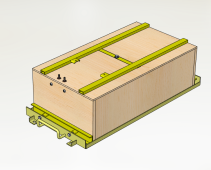Nice find on that charger! And also nice find on the current adjustability of the AIMS. This makes the AIMS very appealing.
I'm tempted to just stick to the Delta charger for now. It seems to me that the main differences between SLA and LiFEPo chargers have to do mostly with what happens at the upper voltage limit (absorption, float, etc), after the charger switches from CC to CV. But if we only want to charge to 90%, then we should still be in CC mode, which will be the same regardless of the type of charger. I think disconnecting the charger either with a timer or via BMS overvoltage protection (or both for extra piece of mind) should be fine, especially given the low cycles in our application (and the fact that we're charging only at ~0.15C). I'm going to look more into this because I could be way wrong.
More on the topic of not relying on the BMS for cutting off: How would this be any different if I bought a fancy "smart" LiFEPO charger? Such a charger would not know if an individual cell goes out of balance and hits 3.65V well before the other ones. If this is the case (which is not unlikely), then the BMS would have to step in every single time. Even if I can adjust the total charge voltage down, nothing would guarantee that a single cell would not hit 3.65V before the whole pack reaches the charge voltage. Obviously that's what the BMS is for. Therefore, I think of "overvoltage protection" as a needed routine feature, rather than as "uh oh, something went wrong". Again, I'm just thinking out loud here; there is obviously a lot that I don't know about this topic.






